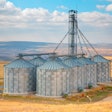大豆作物优秀的评级s at a 20 year highs, yield will likely be left alone from the June report. This means 14/15 soybean supply is likely to come out 169 million bushels over last month's WASDE report and up 425 million bushels from last year. The average analyst expects ending stocks to be reported at 418 million bushels which would imply that demand would increase nearly 76 million bushels from June's report, less than half the expected supply increase. Looking back over the last 14 years we would expect the majority of the demand gains to come from exports which responds more readily to large changes in supply and price. In 2006/07 when supply increased 10% year-over-year, export sales made up nearly ¾ of the demand response to the increased production. In 2009/10, another year with a 10% increase in supply, we saw export sales account for 70% of the demand response year-over-year.
Trade estimates for 14/15 U.S. soybean ending stocks do not factor in a robust response from the demand side as seen in 2009/10 or 2006/07. This sets up the soybean market for a potentially positive report on Friday following weeks of sharp selling. We feel any bounce should be used as a pricing opportunity as the long term fundamentals still look undoubtedly bearish. During the 2006/07 marketing year prices approached $9.00 per bushel and looking back to 1975 soybean prices have found support around the $9.00 per bushel level. These historical benchmarks are important as we enter a very different marketing year from what traders have become accustomed to in recent growing seasons.
Please call the office if you have questions regarding your marketing strategy as we enter harvest. Our number is 877-472-4607 and we would be happy to discuss the markets.


















